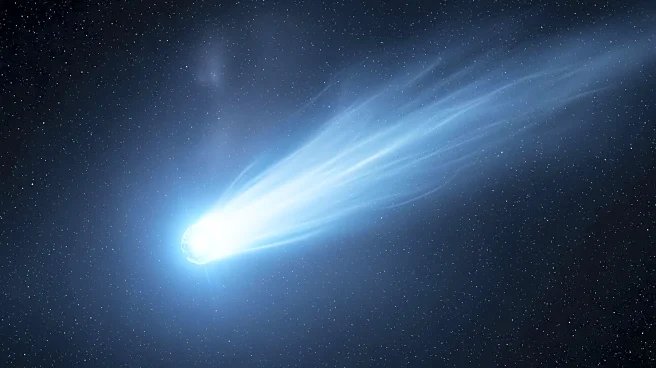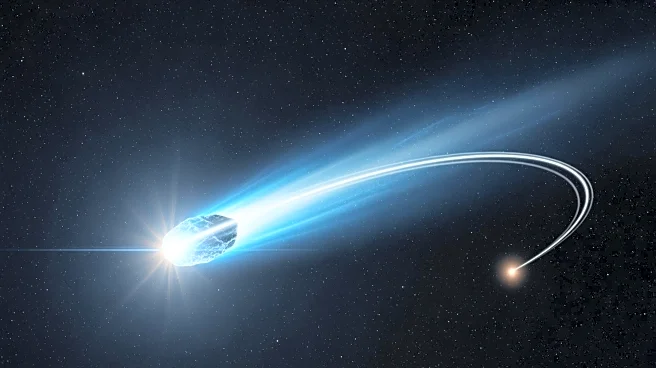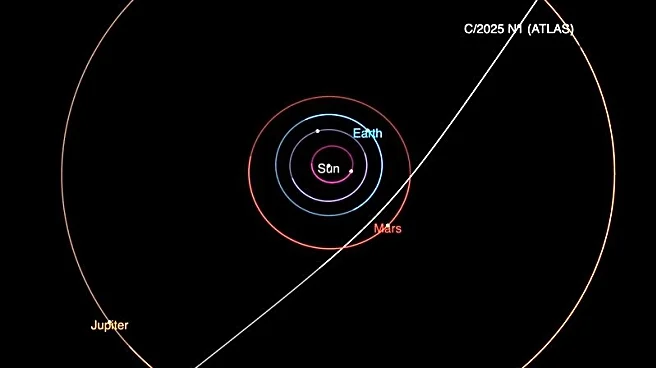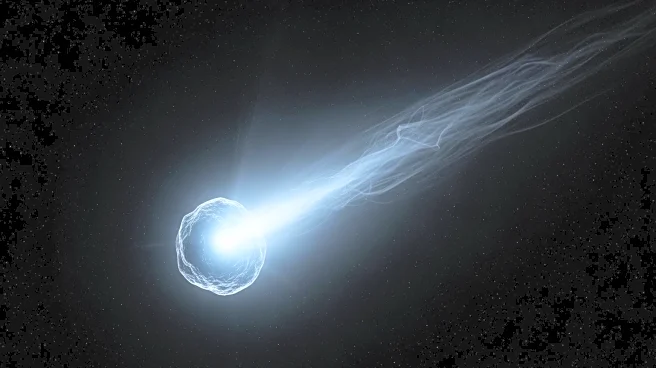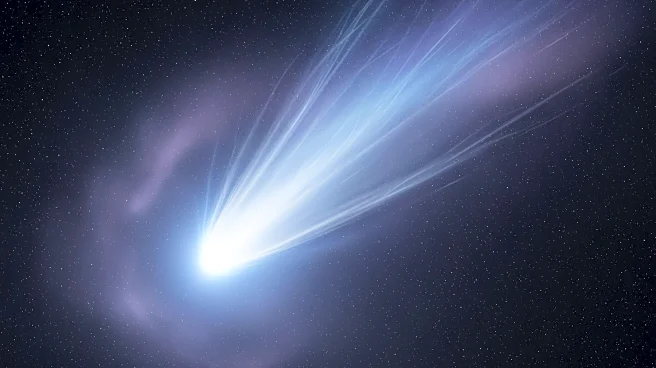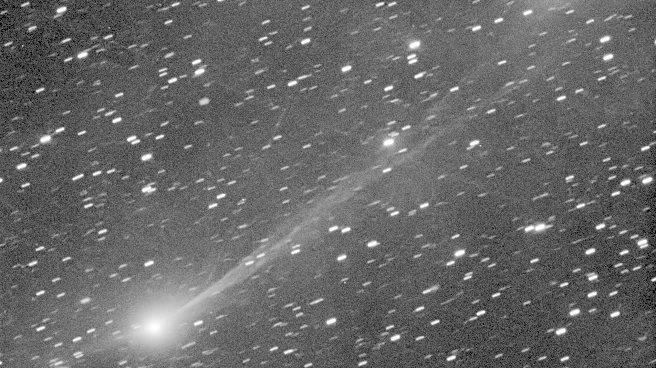What's Happening?
NASA has confirmed that the object known as 3I/ATLAS is an interstellar comet, marking it as the third such object to visit our solar system. Discovered by the ATLAS telescope in Chile, 3I/ATLAS recently passed its closest point to the sun. Scientists
worldwide are observing its journey to learn more about the chemistry of objects from other parts of the galaxy. NASA provided new images and details during a live event, highlighting the comet's significance as a window into another solar system. The comet will be closest to Earth on December 19, although it will still be about 167 million miles away.
Why It's Important?
The confirmation of 3I/ATLAS as an interstellar comet is significant for scientific research, as it provides a rare opportunity to study materials from outside our solar system. Understanding the composition and trajectory of such objects can offer insights into the formation and evolution of other solar systems, potentially predating our own. This research could enhance our knowledge of the universe's history and the processes that govern celestial bodies. The event underscores the importance of international collaboration in space exploration and the role of advanced telescopic technology in discovering and analyzing distant cosmic phenomena.
What's Next?
As 3I/ATLAS continues its journey, it will pass closest to Earth in December before heading towards Jupiter, where it will pass the planet's orbit in spring 2026. Scientists will continue to monitor its path and gather data to refine their understanding of interstellar objects. The ongoing study may lead to new discoveries about the comet's origin and composition, contributing to broader astronomical research. NASA and other space agencies are likely to enhance their observational strategies and technologies to capture more detailed information about such rare interstellar visitors.
